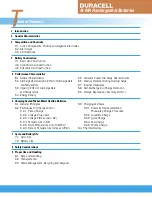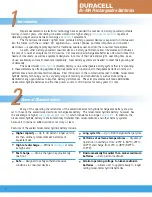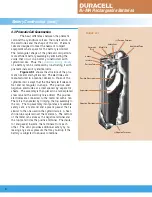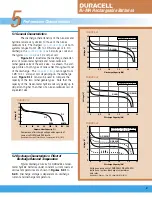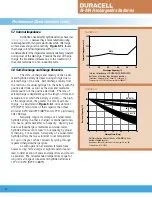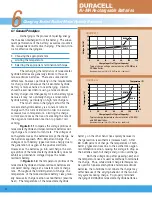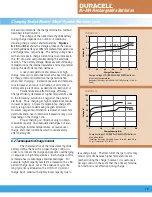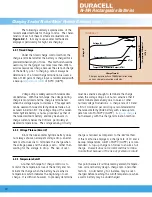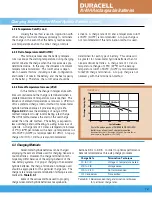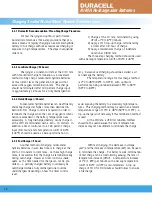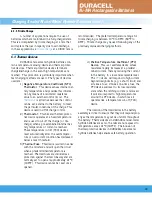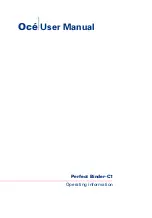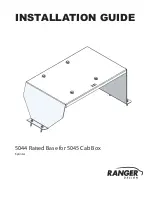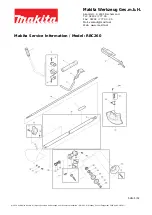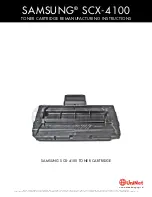
Ni-MH Rechargeable Batteries
1
1
2
2
Introduction
Rapid advancements in electronic technology have expanded the number of battery-powered portable
devices in recent years, stimulating consumer demand for higher-energy
rechargeable batteries
capable of
delivering longer service between recharges or
battery
replacement.
The trend towards smaller, lighter more portable battery-powered devices is expected to continue well
into the future, with the so-called “3 C” applications — cellular phones, portable computers and consumer
electronics — expanding rapidly beyond the traditional business user and into the consumer marketplace.
As with other battery-powered consumer devices, battery performance and convenience will influence
the rate of consumer acceptance for 3C devices. Yet conventional rechargeable batteries often fail to meet the
needs of consumers, as well as equipment designers, in terms of their size and weight, operating time, ease-
of-use, availability and environmental acceptability. New battery systems are needed to meet their growing list
of demands.
The sealed nickel-
metal hydride
(Ni-MH) battery is one rechargeable battery system that is responding
to these demands by offering significant improvements over conventional rechargeable batteries in terms of
performance and environmental friendliness. First introduced to the commercial market in 1988, nickel-metal
hydride battery technology is at a very early stage of maturity and manufacturers such as Duracell have
identified many opportunities to improve battery performance. These improvements will make DURACELL
nickel-metal hydride batteries an attractive power source for 3C devices for many years to come.
General Characteristics
Many of the operating characteristics of the sealed nickel-metal hydride rechargeable battery are simi-
lar to those of the sealed nickel-cadmium rechargeable battery. The nickel-metal hydride battery, however, has
the advantage of higher
energy density
(or
capacity
) which translates into longer
service life
. In addition, the
nickel-metal hydride battery is environmentally friendlier than nickel-cadmium and other battery systems
because it contains no added cadmium, mercury or lead.
Features of the sealed nickel-metal hydride battery include:
1
•
Higher capacity
— Up to 40 percent longer service
life than ordinary nickel-cadmium batteries of
equivalent size.
•
High rate discharge
— Efficient
discharge
at rates
as high as 2C.
•
Fast charge
— Can be charged in approximately
one hour.
•
Safe
— Designed to safely withstand abusive
conditions in consumer devices.
•
Long cycle life
— Up to 500 charge/discharge cycles.
•
Performs at extreme temperatures
— Capable of
operation on discharge from -20
°
C to 50
°
C (-4
°
F to
122
°
F) and charge from 0
°
C to 45
°
C (32
°
F to
113
°
F).
•
Environmentally friendlier than nickel-cadmium
batteries
— Zero percent cadmium.
•
Similar operating voltage to nickel-cadmium
batteries
— Allows user to upgrade easily to longer
lasting nickel-metal hydride batteries.

